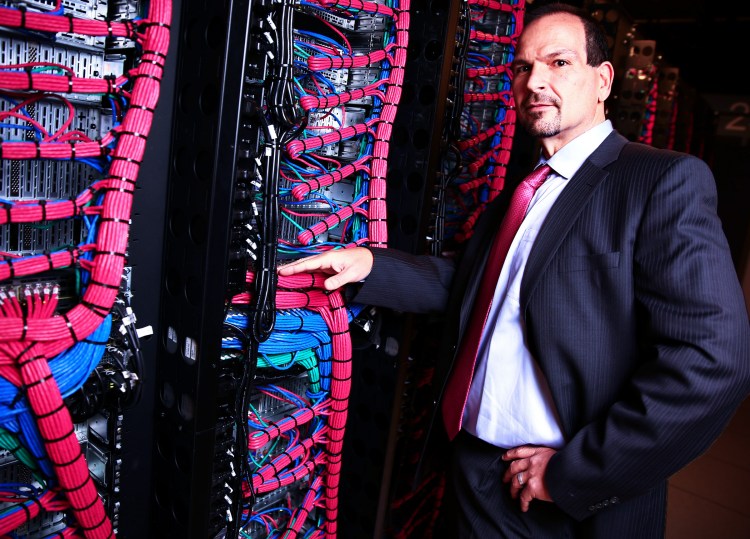Talk to Lance Crosby, chief executive of IBM’s SoftLayer cloud division, and you’ll hear confidence.
Revenue growth. Big customers. A smorgasbord of services, including some with fancy “cognitive” capability.
That’s all become real in the year since IBM paid a reported $2 billion for SoftLayer, which sells cloud-based storage and servers and server slivers to companies.
“The real news here is, you know, the enterprise is buying en masse,” Crosby said in an interview with VentureBeat. “They’re no longer just looking or talking about cloud.”
Executives from top cloud provider Amazon Web Services have spouted that message in recent months, but it’s one thing for the market leader to say it, and another thing for companies in a less-dominant position. Now Big Blue, which is a giant in computing services generally but a distant follower to Amazon in the market for cloud services, is also seeing substantial growth.
Since the acquisition, SoftLayer has picked up more than 6,000 new customers, and 3,000 existing IBM customers have shelled out money to use SoftLayer’s infrastructure, Crosby said.
New customers include Macy’s, Sicoss Group, Whirlpool, and moovel Gmbh, a subsidiary of Daimler.
At the same time, IBM’s competitors are hardly standing still. Amazon, Google, and Microsoft have been adding customers fast as they race to stay competitive with one another on price and features.
No need to fuss over prices, as Crosby sees it.
“There’s no question that Amazon wants to be the price leader, and that’s not our strategy,” he said. “Our strategy is to bring value and the most features at the best cost.”
To that end, IBM made several feature announcements today, including the availability of the Watson Engagement Advisor on SoftLayer atop IBM’s POWER8 chips; hourly pricing for more dedicated “bare metal” servers running no virtualization software; and Elastic Storage, which was previously marketed as GPFS.
Oh, and by the way, IBM has no intention of devouring its own ecosystem, as Amazon did last week by introducing mobile-backend and file-sharing services that compete with some of its partners.
“You have to look at the history of IBM,” Crosby said. “IBM’s customers are Capgemini, Deloitte, Accenture — companies that we could easily compete with, but instead we enable them to build solutions and grow themselves. We want to put all the components together to allow our customers to build solutions. Because my conviction is I cannot think of everything.”
Crosby would not comment on how much of IBM’s nebulous cloud revenue comes from the use of SoftLayer cloud infrastructure.
He pointed to Amazon’s own cloudy cloud-revenue reporting conventions.
“The point is, it’s more of a competitive nature,” he said. “Nobody wants to until we have to.”
Additional SoftLayer data centers are on the way this year in Frankfurt, Toronto, Montreal, Mexico City, Sao Paolo, Paris, Sydney, and other cities, Crosby said.
VentureBeat's mission is to be a digital town square for technical decision-makers to gain knowledge about transformative enterprise technology and transact. Learn More

